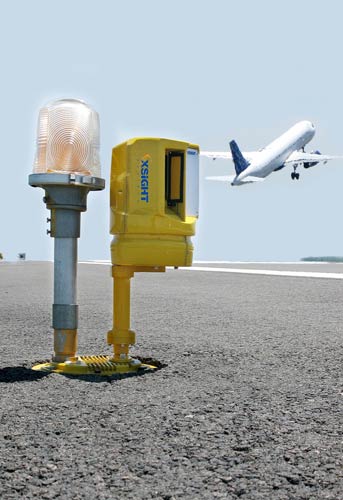By Avigayil Kadesh
Birds, wildlife and bits and pieces of aircraft - “foreign object debris,” or FOD for short - all contribute to dangerous runway conditions costing airports and airlines billions of dollars in damages each year.
Though many solutions have been floated in recent years, a unique sensing system developed by the Israeli company XSight Systems recently got the nod from the US Federal Aviation Administration (FAA).
The FAA’s final report on FODetect, based on testing at Boston’s Logan International Airport since 2007, shows that XSight’s made-in-Israel system meets or exceeds all FAA criteria - a remarkable accomplishment considering that the Israeli company began only in 2005 and employs just 55 people.
“The FODetect system was able to detect objects of various shapes, sizes, and materials on runway surfaces and perform satisfactorily in nighttime, daytime, sun, rain, mist, fog, and snow conditions,” according to the report, issued in June 2012.
Built to avoid disaster
The idea for FODetect took root after the incident in which a Concorde supersonic jet crashed after takeoff from Paris in 2000, killing 113 people. An investigation committee concluded that the cause of the disaster was a foreign object dropped onto the runway by a DC-10 airliner just prior to the Concorde’s ill-fated takeoff.
The committee’s report, released in 2002, sparked the interest of six Israelis involved in developing remote sensing guides for the Israeli military industry.
“The committee recommended looking for solutions for automatic monitoring, and we started looking into it,” says Aviv Goner, XSight’s vice president for research and development. “As opposed to other companies that used existing technology for this purpose, we started at square one and ran through various technologies to find the best solution.”

XSight’s FODetector at work on the runway
They believed that regardless of technology, the smartest solution would have to incorporate smart sensors on the runway edge lights. “Where to put the sensors was the start point,” says Goner.
This decision proved critical to XSight’s success. Goner explains that the FAA tested four different solutions – three fixed, working 24/7; and one mobile, mounted on cars that do a four-time-a-day patrol of the runways. The other fixed solutions were on towers – a big disadvantage at an airport – while FODetect was the only one right on the runway. The fact that it works continuously and on the spot made it the winner.
The technology involves high-grade sensors, both radar and video, for detection of FOD. “Each one has pros and cons, so we use both,” explains chief technology officer Oded Hanson.
Improved airport management
After about two years of R&D, the founders launched XSight in Rosh HaAyin, north of Tel Aviv. Following an advisory circular 150/5220-24 from the FAA at September 2009, the device went on the market.
“De Gaulle [Paris airport] evaluated a small-scale system during 2010 and later decided to purchase it from us,” says Goner. The airports in Bangkok and Tel Aviv put FODetect on runways in 2011, and other customers are to follow.
“The whole aviation industry is a potential market regardless of location, and regardless of whether it’s for military or civilian airports,” Goner notes. “This is just about airplanes on runways.”
The system has other significant advantages for airport management in surveillance and security, adds Hanson. “We provide them with eyes they never had before, even aside from detecting FOD. If they have a request to see something on the runway, they can get live video without going there physically.”
It’s difficult to quantify the savings realized by FODetect because so many factors are involved, from capacity and labor costs to liability and insurance costs in addition to secondary expenses that are impossible to measure.
“We know that the system is detecting many objects in all these airports,” says Goner. “It’s obvious that if you can prevent one accident, you can cover the cost of the system because each accident, even without casualties, costs several million dollars including repairs, rerouting of passengers and reputation. There are several links in this chain: airlines, equipment companies and the airports themselves.”
“We trust that our innovative radar and day/night image processing technology provides the most reliable and efficient solution to automated runway FOD detection, which in turn contributes to heightened airport safety and to increased operational efficiency,” said CEO Alon Nitzan.